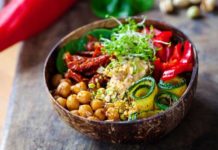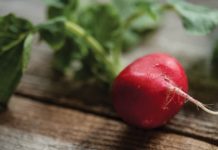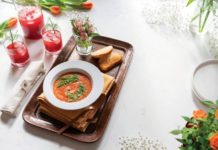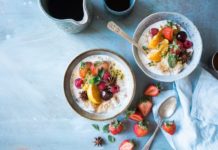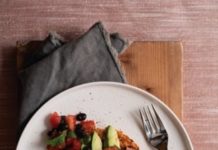
Painful periods are a fact of life for up to 90 percent of women. But do they have to be? You can minimize or eliminate your period pain by addressing your diet, lifestyle, and nutrition, and with careful use of supplements.
Women endure many things in their lives. One of these recurring “things” occurs every month and has earned an immense collection of nicknames—most of them negative. But do we have to endure the pain and other symptoms that often accompany these monthly visits from “Aunt Flo”?
Common but concerning
Abdominal cramps, low back pain, pain in the inner thighs, headaches, and fatigue: up to 90 percent of women experience these symptoms during their period, with up to one-quarter having symptoms severe enough to miss work.
Diagnosing dysmenorrhea
Dysmenorrhea, the medical term for painful periods, has two types: primary and secondary.
Primary dysmenorrhea is due to the production of prostaglandins in our uterus. It often starts in our teens and lessens with age.
Secondary dysmenorrhea is the result of an underlying condition that causes period pain, such as endometriosis or uterine fibroids. It often starts later in life and doesn’t get better with age.
Baby benefits
Period pain often lessens after having a baby, even if the baby is delivered by Caesarean section.
Why are periods painful?
Just before the start of our period flow, the blood supply and oxygen delivery to the uterus is reduced. To shed its lining, the uterus produces inflammatory compounds called prostaglandins that cause contractions. This combination of low oxygen, prostaglandins, and cramping contractions causes
period pain.
Did you know?
Women who experience period pain are more sensitive to pain in general, not just during their periods.
Your guide to pain-free periods
Not every woman experiences painful periods. What do they know that the rest of us don’t? While some women will continue to have mild cramping, it is possible to eliminate most of the pain associated with your period. By focusing on lifestyle, diet, and specific supplements, this guide will help you to be pain-free, period.
Diet and lifestyle
Studies have found that lifestyle factors contribute to painful periods. Women who are underweight or overweight are more likely to have painful periods, as are heavy smokers and women with heavier periods.
Eat more fruit and veg
Women who eat more fruits and vegetables have less menstrual pain, while those who consume more sugar, more salt, and more caffeine have more pain. So cut back on these foods—you already know you should.
Reduce stress
Women who report more work or life stress experience more painful periods. Some of the ways to help reduce stress are common sense things such as staying active—both physically and socially—and taking control of your busy schedule by learning to prioritize.
Exercise regularly
This can reduce pain by improving blood flow to the uterus and
altering production of pain-promoting prostaglandins in the uterus. Regular exercise is best, but exercising just before and during your period can also help, especially if you have a sedentary job.
Nutrition for pain-free periods
Nutrient deficiencies have been found to increase period pain for women, and focusing your attention on a few key nutrients can help you be pain free.
Vitamin B1
Alone or with omega-3-rich fish oils, vitamin B1 can reduce cramps and mood changes during your period.
Vitamin D
Deficient in one-third of Canadians, vitamin D may help reduce pain in those women who are deficient.
Vitamin E
Often combined with fish oils, which are also helpful, vitamin E may be as effective as pain medications for reducing period pain.
Magnesium
Thought to contribute to painful periods when deficient, magnesium may be the most impactful nutrient for period pain. It can help relax the uterus, enhance our ability to cope with stress, reduce premenstrual syndrome (PMS) symptoms (especially when combined with vitamin B6), and both prevent and treat painful periods.
Botanical medicines for period pain
If changing your diet, improving your lifestyle, and making sure you get your nutrients doesn’t result in pain-free periods, there are still some natural options to relieve your pain.
Ginger
Known to reduce prostaglandin production, ginger is the bomb for reducing period pain. Taken for five days, beginning just before your period, it has shown to be effective, with minimal side effects.
Other spicy options
Cinnamon—potentially as effective as ibuprofen—and fenugreek are typically taken as supplements, but using these spices in food and tea could possibly reduce period pain as well.
Valerian
Best known for its impact on sleep, valerian may also reduce period pain.
Chasteberry
This herb is often prescribed for its benefits in relieving PMS.
Overcoming period pain is possible, but it won’t happen overnight. Use the recommendations in this guide, focusing on your diet, lifestyle, nutrition, and botanicals, and you can have a positive impact on your period pain and live your best life, every day of the month.
Avoid these to reduce period pain
- sugar
- alcohol
- salt
- caffeine
- salty snacks
- cookies, cakes, and baked goods
- skipped meals
- cigarettes
- sedentary lifestyle
Dr. Lisa Watson is a naturopathic doctor in Toronto. She shares her knowledge on women’s hormones and all things lady garden at her website, drlisawatson.com.











